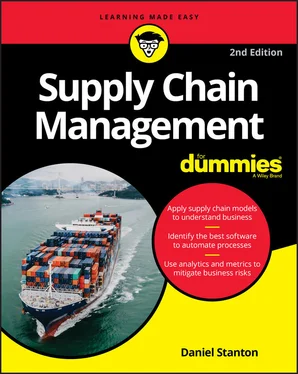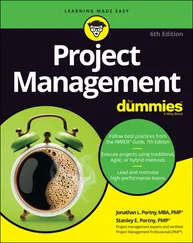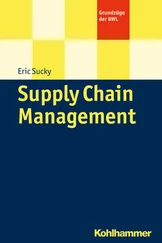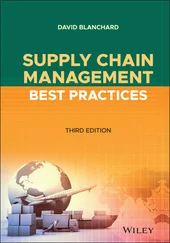170 173
171 174
172 175
173 176
174 177
175 178
176 179
177 180
178 181
179 182
180 183
181 184
182 185
183 186
184 187
185 188
186 189
187 190
188 191
189 192
190 193
191 194
192 195
193 196
194 197
195 198
196 199
197 200
198 201
199 203
200 204
201 205
202 206
203 207
204 208
205 209
206 210
207 211
208 212
209 213
210 215
211 216
212 217
213 218
214 219
215 220
216 221
217 222
218 223
219 224
220 225
221 226
222 227
223 228
224 229
225 230
226 231
227 232
228 233
229 234
230 235
231 236
232 237
233 238
234 239
235 240
236 241
237 242
238 243
239 244
240 245
241 246
242 247
243 248
244 249
245 250
246 251
247 252
248 253
249 254
250 255
251 256
252 257
253 259
254 260
255 261
256 262
257 263
258 264
259 265
260 266
261 267
262 268
263 269
264 270
265 271
266 272
267 273
268 274
269 275
270 276
271 277
272 278
273 279
274 280
275 281
276 282
277 283
278 284
279 285
280 287
281 288
282 289
283 290
284 291
285 292
286 293
287 294
288 295
289 296
290 297
291 298
292 299
293 300
294 301
295 302
296 303
297 304
298 305
299 306
300 307
301 308
302 309
303 310
304 311
305 312
306 313
307 314
308 315
309 316
310 317
311 318
312 319
313 320
314 321
315 322
316 323
317 325
318 326
319 327
320 328
321 329
322 330
323 331
324 332
325 333
326 335
327 336
328 337
329 338
330 339
331 340
332 341
333 342
334 343
335 344
336 345
337 346
338 347
339 348
340 349
341 350
342 351
Supply chain management is about seeing your business as an interconnected system. Supply Chain Management For Dummies covers the tools, rules, and language that you need to understand how the parts of your company’s supply chain fit together. The book also shows you how to plan and manage your supply chain in ways that reduce costs, increase profits, and minimize risk.
Many books treat supply chain management as part of operations, logistics, or procurement, but this book takes a broader approach, showing that those functions are interconnected parts of a system.
I include lots of everyday examples that make it easy to understand each step in any supply chain and how virtually any company can employ supply chain principles.
Most people get to see only a small part of the supply chains that they work in. This book helps you understand all the other processes and systems in a supply chain, as well as how decisions that you make affect others up and down the supply chain, including your customers and suppliers. The book uses language that’s easy to understand and is organized in a way that makes access to specific topics easy.
In writing this book, I assumed that supply chain management is important to you because
You need to understand it for your current job.
You need to understand it for a future job.
You need to explain it to other people so that they can do their jobs better.
I assume that you have some connection to supply chain management, probably because you’ve studied or worked in logistics, operations, or procurement. I assume that you may have been taught to see supply chain management from a narrow, functional perspective rather than as an end-to-end, integrated system.
I assume that you want to understand how decisions made in one part of a supply chain can influence the results in another. Many companies have made bad choices with expensive consequences simply because they didn’t recognize the effects of those choices on their supply chains. When you consider that more than 70 percent of costs and 100 percent of revenue depend on supply decisions, it’s clearly worth the time and energy to understand how to manage a supply chain efficiently.
Icons emphasize a point to remember, a danger to be aware of, or information that you may find helpful.
 The Tip icon marks tips (duh!) and shortcuts that you can use to make supply chain management easier.
The Tip icon marks tips (duh!) and shortcuts that you can use to make supply chain management easier.
 Remember icons mark information that’s especially important to know. To siphon off the most important information in each chapter, skim the paragraphs that have these icons.
Remember icons mark information that’s especially important to know. To siphon off the most important information in each chapter, skim the paragraphs that have these icons.
 The Technical Stuff icon marks information of a highly technical nature that you can normally skip.
The Technical Stuff icon marks information of a highly technical nature that you can normally skip.
 The Warning icon tells you to watch out! It marks important information that may save you headaches.
The Warning icon tells you to watch out! It marks important information that may save you headaches.
You can read this book in different ways, depending on why you’re reading it. You can certainly start at the beginning and skip the things you already know, but I’ve written the book so that you can start reading anywhere that catches your eye and then hunt for additional bits that sound interesting.
If your goal is to discover what supply chain management is, start with Part 1. If you’re trying to get a sense for how the pieces of a supply chain fit together in a framework, read about the Supply Chain Operations Reference (SCOR) Model in Part 2. If you need to get a handle on the technologies that are key to supply chain management, check out Part 3. If you’re looking for ways to drive strategic value for your company by using supply chain management tools, jump into Part 4. Finally, Part 5is packed with information that can help you grow your career in supply chain management.
 Some of the material in this book will be useful if you’re preparing for a supply chain certification such as Certified Supply Chain Professional or SCPro (see Chapter 20), but you shouldn’t use it as a substitute for the official study guides.
Some of the material in this book will be useful if you’re preparing for a supply chain certification such as Certified Supply Chain Professional or SCPro (see Chapter 20), but you shouldn’t use it as a substitute for the official study guides.
No matter how you go through the book, you’ll eventually want to read all the chapters. Each chapter is useful on its own, but the chapters work together to help you see how interconnected the parts of a supply chain are and why you need to think about all of them when you make decisions that affect your business, your customers, and your suppliers.
 For some helpful information about how to describe supply chain management, how to lead supply chain projects, and how to use the SCOR Model, check out the Cheat Sheet for this book by visiting
For some helpful information about how to describe supply chain management, how to lead supply chain projects, and how to use the SCOR Model, check out the Cheat Sheet for this book by visiting https://www.dummies.com and entering the book’s title in the search field.
Читать дальше

 The Tip icon marks tips (duh!) and shortcuts that you can use to make supply chain management easier.
The Tip icon marks tips (duh!) and shortcuts that you can use to make supply chain management easier. Remember icons mark information that’s especially important to know. To siphon off the most important information in each chapter, skim the paragraphs that have these icons.
Remember icons mark information that’s especially important to know. To siphon off the most important information in each chapter, skim the paragraphs that have these icons. The Technical Stuff icon marks information of a highly technical nature that you can normally skip.
The Technical Stuff icon marks information of a highly technical nature that you can normally skip. The Warning icon tells you to watch out! It marks important information that may save you headaches.
The Warning icon tells you to watch out! It marks important information that may save you headaches.










